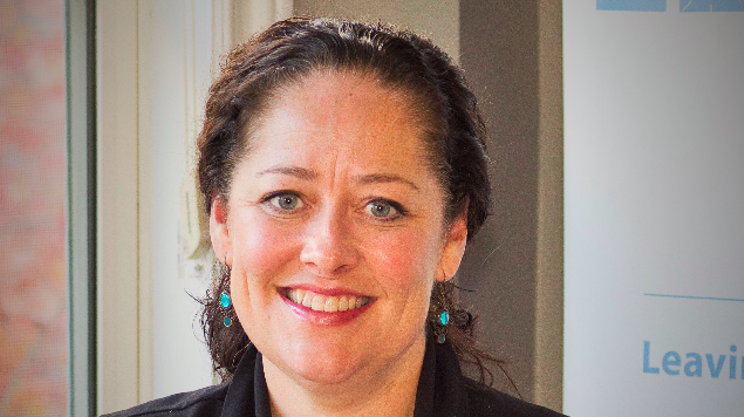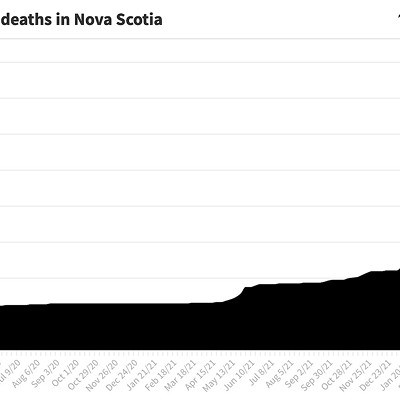Four family members were laid to rest this week.
Brenda Desmond: a woman who was “known for her smile, laughter, humour, and strong love.” Shanna Desmond: a registered nurse at St. Martha’s Regional Hospital, remembered by her sister as “the rock of the family.” Aaliyah Desmond: a 10-year-old animal-lover with dreams of becoming a veterinarian. Lionel Desmond: a member of the Canadian Armed Forces who served with two tours in Afghanistan.
By now, the story is well-known across the province—even across the country. Lionel shot his mother, wife and daughter at their home in Upper Big Tracadie before turning the gun on himself. His obituary says he “succumbed to the tortures of PTSD.”
Lionel’s mental illness became the dominant narrative soon after his death. A suffering vet, who’d been denied services at the very hospital where his wife worked (the hospital, now, says that never happened). Other voices, such as Ardath Whynacht and Elizabeth Renzetti, argued that side of the story overshadowed a much-needed discussion about domestic violence. After all, Lionel wasn’t the only person who lost his life.
There’s no straight answer, but that doesn’t mean the dialogue isn’t needed. The reality is that combat trauma and domestic violence are linked not only in their devastating impacts, but the often inadequate support for both.
According to the Globe and Mail, almost one in 10 of the Canadians who served in the Afghanistan have been diagnosed with post-traumatic stress disorder. At least 70 of those who served have since died by suicide.
Trev Bungay, the vice-president of veteran relations at Trauma Healing Centers, has dealt with PTSD himself. Because cases differ from person-to-person, explains Bungay, it’s hard to define the illness. But he explains it as best he can.
“They’ve been through a traumatic event, and that traumatic event keeps playing over and over and over.”
Bungay points out that are misconceptions all the time, but people with PSTD aren’t “crazy.” They’re experiencing what he calls “utter confusion.”
“Their mind is a mess. Picture, basically, a bowl of spaghetti,” he says. “Everything’s just confusing. Nothing’s firing correctly. It’s very hard to, you know, come out of that.”
Bungay acknowledges that, in the case of Lionel Desmond, PTSD wasn’t the only factor.
“The guy took a gun to his family. That is family violence, 100 percent,” he says.
“It doesn’t make it right…All I’m trying to do is say: when you look at the situation you have to understand he had post-traumatic stress.”
Miia Suokonautio, executive director of YWCA Halifax, feels it’s important to be sensitive when looking at specific cases.
“We don’t know what happened in that home and we don’t know what happened in (Lionel’s) life,” she says.
For that reason, those looking in from outside the family and the community need to be careful.
“That being said, I know at the YWCA we work on issues of violence against women every single day. Every day,” says Suokonautio. “Whether or not that has any connection to what happened is not the point anyway. We continue doing the work that we do.”
According to a report on family violence in Canada from last year, an estimated 760,000 (or four percent) of Canadians over the age of 15 years said they had experienced spousal conflict, abuse or violence in the previous five years.
A 2009 report by Kerry Sudom honed in on domestic violence and the Canadian Forces specifically. In the introduction, Sudom pointed out that data on violence in military families—the Canadian Forces in particular—is scarce.
The goal of the report was to provide an overview of what little research that had been done. Results showed that in 2008, 5.1 percent of spouses reported that their partner had been violent towards them and 3.5 percent had been violent towards children. Sudom wrote that the percentage, although small, is not insubstantial.
“It is important to assess the prevalence and incidence of abuse, and the factors associated with it, in order to increase the effectiveness of current programs and policies regarding abuse in the CF,” reads the report.
Suokonautio points to multiple things that serve as barriers for women leaving abusive partners: social pressures, money and the normalization of violence are just a few factors. There are also plenty of women who wouldn’t know where to go if they did leave.
“People do use transition houses…but the majority of women will actually go to a family member or a friend’s,” explains Suokonautio. For those without a network of support, finding a safe place can be a challenge.
As if that weren’t enough, emotional ties make it even more difficult.
“There’s this ambiguity, because you may actually still love someone.”
But leaving an unsafe situation is understandable—and necessary. Even if the abuser is struggling with a mental illness.
“If you don’t feel safe, you need to take care of yourself first,” she says. “That’s priority number one.”


















